It’s day 24 in the Bread Baker’s Apprentice Challenge and we’re making Panettone. I thought about skipping this one until December but I didn’t want to get out of sequence in the challenge so I just took a little break. You probably didn’t miss me because I’ve been making other breads and jams in the meantime. It’s November and I’ll be making festive breads this month anyway so I decided it was time to make the Panettone. I’ll just freeze it until December. It is an enriched bread so it should freeze pretty well.
Panettone
Makes: Two large loaves, a bunch of small loaves or a combination
- 1 cup (7 ounces) mature starter
- 1 cup (8 ounces) milk, lukewarm (90 to 100 degrees F.)
- 1 cup (4.5 ounces) unbleached all-purpose flour
Fruit Blend
- 1 cup (6 ounces) golden raisins
- 1 cup (6 ounces) candied fruit blend (or dried fruit, such as dried cranberries, apricots, and apples)
- 1/2 cup (6 ounces) brandy, rum, or whiskey
- 1 tablespoon (.5 ounce) orange or lemon extract
- 1 tablespoon (.5 ounce) vanilla extract or Fiori di Sicilia (a blend of extracts and floral oils)
Dough Ingredients
- 3 cups (13.5 ounces) unbleached all-purpose flour
- 3 tablespoons (1.5 ounces) granulated sugar
- 3/4 teaspoon (.19 ounce) salt
- 1 tablespoon (.33 ounce) instant yeast
- 1 large (1.65 ounces) egg, at room temperature and slightly beaten
- 1 large (.65 ounce) egg yolk
- 4 to 6 tablespoons (2 to 3 oz) water, lukewarm (90 to 100 degrees F.)
- 1/2 cup (4 ounces) unsalted butter, at room temperature
- 1 cup (5 ounces) blanched almonds, slivered or chopped
Mix in the milk and flour just long enough to hydrate all the flour and to make a sponge. Cover the bowl with plastic wrap and let the dough ferment at room temperature for approximately 4 hours, or until the sponge begins to foam and bubble, then put it in the refrigerator overnight.
Soaking the fruit
While you’re waiting for the sponge to ferment, mix together the raisins and candied fruit in a bowl. Add liquor (I used rum) and extracts.
Cover the bowl and let this sit out overnight to allow the fruit to fully absorb the liquid.
Mixing the Dough
The next day, remove the wild-yeast sponge from the refrigerator 1 hour before making the dough to take off the chill.
Add as much of the lukewarm water as needed to form a dough. I didn’t need to add any of the water. The sponge provided enough liquid because of the consistency of the starter that I used to make the sponge.
Stop mixing and allow the dough to rest for 20 minutes to let the gluten begin to develop. Add the softened butter and the soaked fruit mixture and continue mixing until the ingredients are evenly distributed.
Add flour if necessary (you will probably have to sprinkle small amounts of flour continually as you knead to keep it from sticking to your hands, but use only the minimum necessary to allow you to knead without getting the dough all over your hands).
To keep the dough from sticking to my hands and to keep from adding too much flour, I periodically dipped my hands in flour and rubbed them together to get the mixture off my hands and incorporate it back in the dough. This way, I didn’t have to wash my hands every time I needed to take a photo. Besides, they just get sticky again and washing them off wastes the dough. You can see the sprinkles of dough that came off of my hands in the photo above and below.
The entire kneading process, after the resting period, should take 6 to 10 minutes. The dough should be soft and supple, tacky but not sticky. It took me a good 10 minutes (maybe a little more) to get the dough the right consistency.
Lightly oil a bowl and transfer the dough to the bowl, rolling it around to coat it with oil. Cover the bowl with plastic wrap and let the dough ferment at room temperature for approximately 2 hours. During this time, it will rise very slowly and only increase to about 1 1/2 times its original size.
Preparing Panettone Pans
You can use professional panettone papers or prepare the pans as shown below:
Use the bottom of a round pan to trace a circle on baking parchment. Cut out the circle and place it in the bottom of the pan. You can also make a parchment collar to ensure easy removal after baking. I decided to use a springform pan for easy removal but I also lined it with parchment paper.
Shaping the Loaves
Divide the dough into the desired sizes. If you are making large 2-pound loaves, divide the dough in half and round the pieces into 2 boules. Place them into the prepared pans. Press the dough down slightly to spread it into the papers or pans. The dough should reach halfway up the forms. I made one large loaf and a bunch of smaller loaves.
To make mini panettones, you can use individual baking papers or grease muffin pans and fill each cup half full.
Mist the dough with spray oil and loosely cover the pans with plastic wrap.
Proof the dough at room temperature for approximately 2 hours, or until it nearly doubles and has risen just to the height of the pans.
Baking the Loaves
Preheat the oven to 325 degrees with the oven rack in the lower third of the oven. Bake large loaves for up to 1 1/2 hours, depending on the oven. Bake mini loaves for 25 to 35 minutes. The top of the dough could get very brown before the center is baked. If so, cover the tops with aluminum foil or a sheet of baking parchment. My loaf was starting to get too brown on top so I covered it with baking parchment.
The finished bread should sound hollow when thumped on the bottom, and be golden brown all around.
Transfer the loaves to a cooling rack and thoroughly cool before serving, at least 2 hours. These breads are best kept by wrapping them in aluminum foil after they completely cool. You can store them at room temperature for as long as 2 weeks.
I’m submitting these delicious loaves to YeastSpotting, a bread roundup hosted by Susan of Wild Yeast. Please visit Wild Yeast to view all of the lovely breads in the roundup.
The next bread in Bread Baker’s Apprentice Challenge, is Pizza Napoletana (page 207). I can’t wait to try this one. I love pizza!
Cathy
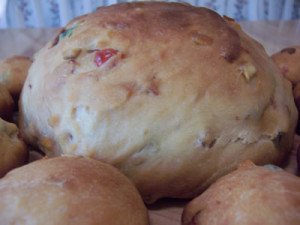
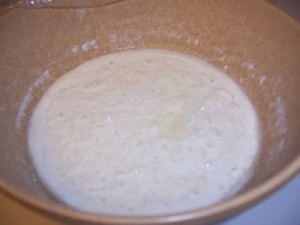
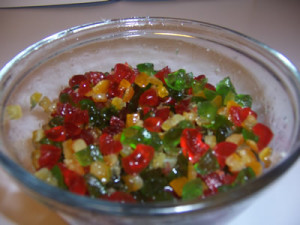
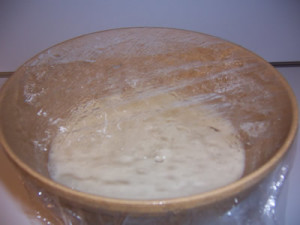
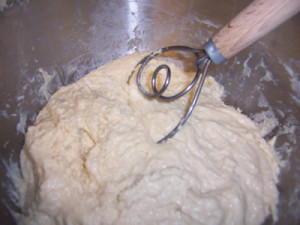
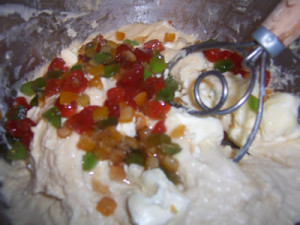
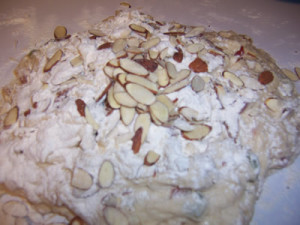
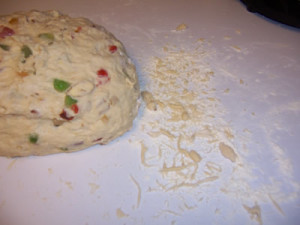
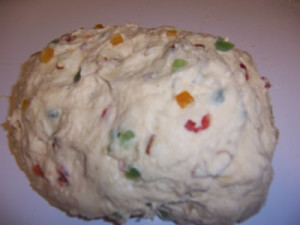
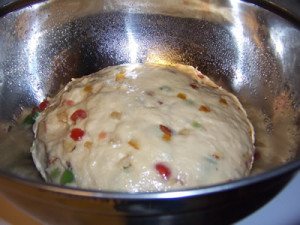
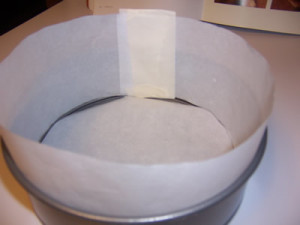
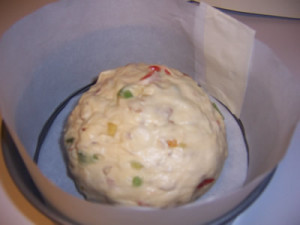
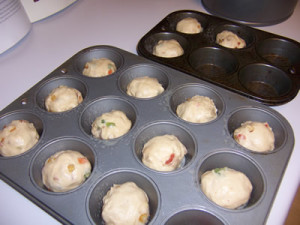
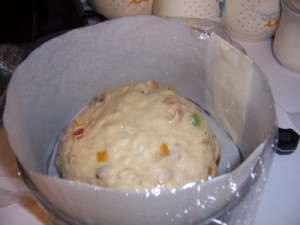
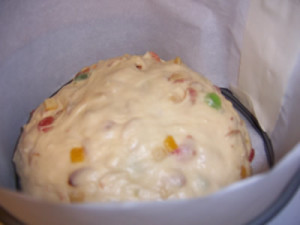
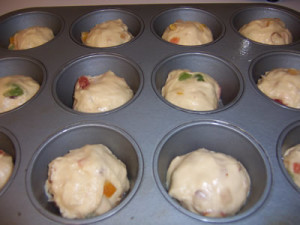
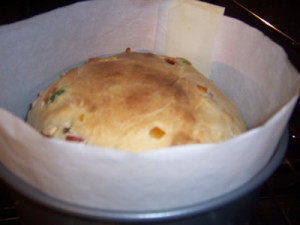
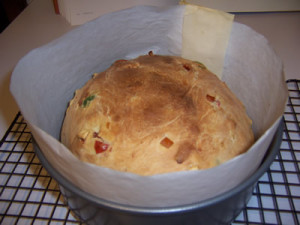
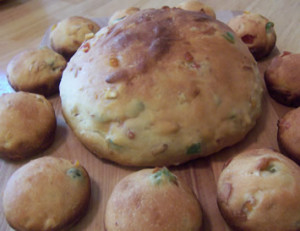
Alyssa says
What a pretty bread this is! I can’t wait to get to this one in the Challenge. I really like that you included a bit of history; thank you.
Cathy (breadexperience) says
Thanks Alyssa! I love bread history! I’m glad you enjoyed it too.
misterrios says
I adore the picture of the big “mother ship” Panettone surrounded by all the little ones.
I don’t think I could freeze the bread and save it for later. I love fruit and nut breads.
Cathy (breadexperience) says
Thanks misterrios! The fruit and nuts are definitely yummy, but my waistline just can’t handle all this bread! Although I froze the large loaf, I must admit I’ve been eating the smaller ones and boy are they good!
Mimi says
I love the mini panetones. Very cute!
Cathy (breadexperience) says
Thanks Mimi! They taste good too!
Mags says
Nice job with the panettone! I’m always in awe of those who kneed the dough by hand instead of by mixer. I’ve yet to do that.
Cathy (breadexperience) says
Thanks Mags! I love kneading the dough by hand whenever I can. You ought to try it sometime. It’s a wonderful stress reliever!
Anonymous says
Can this bread be done in bread machine.
Thanks in advance.
Cathy (breadexperience) says
Hi Anonymous! This bread uses a “wild yeast” starter. That part is done by hand. As far as mixing the the dough, I mixed the ingredients by hand using a dough whisk but you could mix the ingredients on the dough setting in a bread machine, then shape it by hand and bake it in a conventional oven. I suppose you could also bake it in the bread machine but I think you would lose some of the authenticity of the bread by doing that. It’s the shape (and flavor) that’s unique about this bread.
Let me know if you try it. I’d be interested to see how it goes.